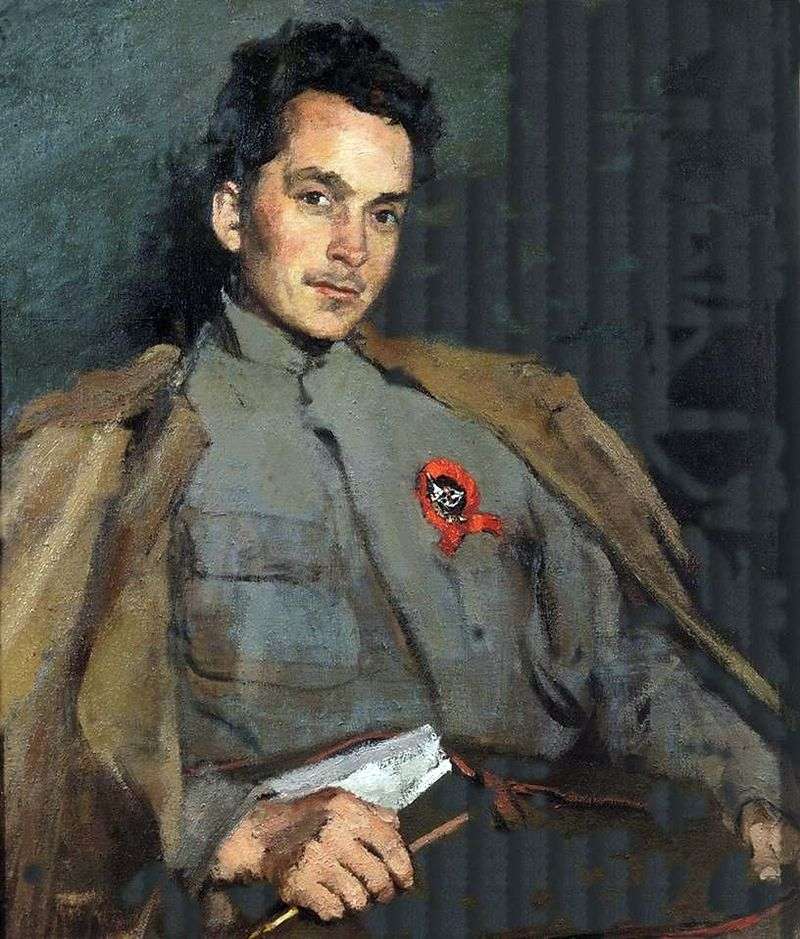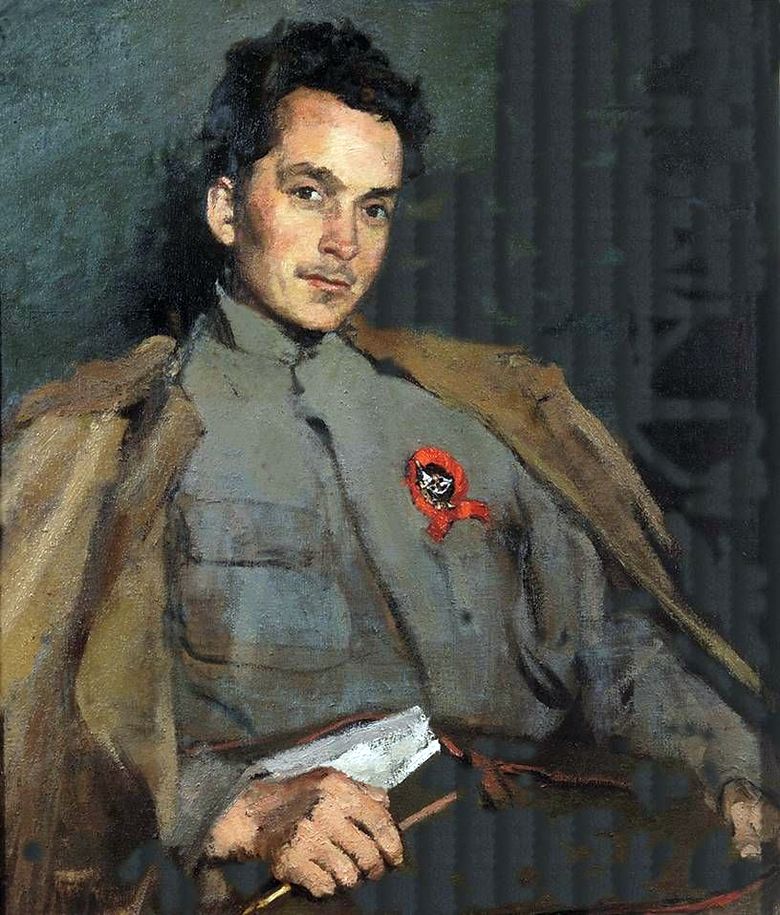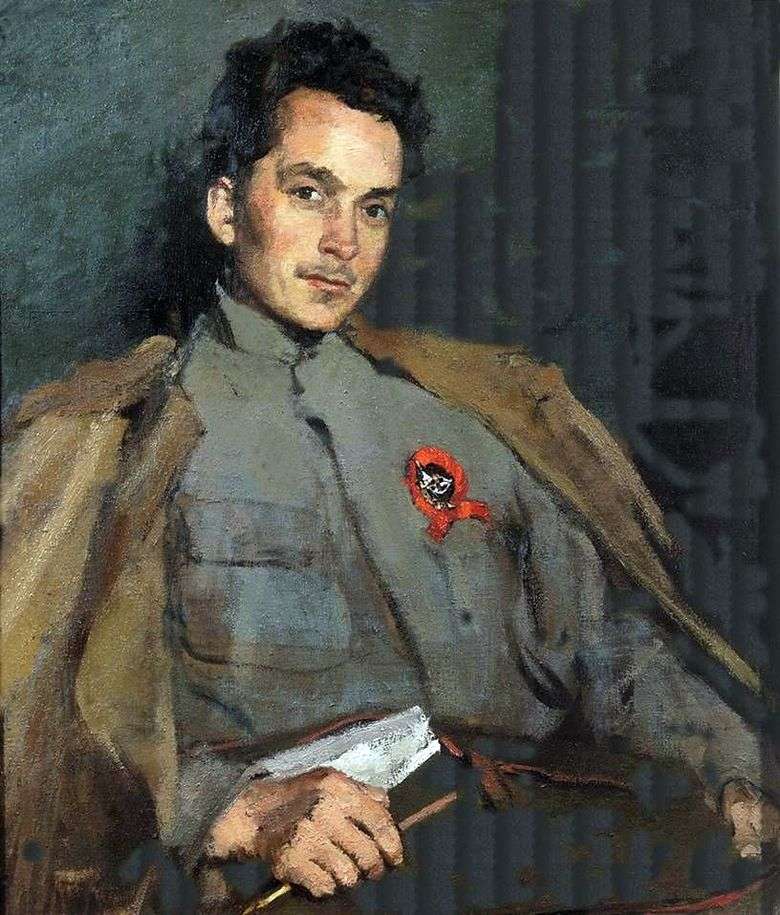
The Great October Revolution died down. In the history of mankind, a new chapter has been opened, to write which victor enthusiasts filled with faith and decisiveness were called to write. It was necessary to solve difficult tasks – to rebuild a new state, to establish a new life and social relations, to create a new one that meets the tasks of the era, art. Academician of painting S. Malyutin gave all his creative powers, pictorial experience and burning soul to the revolution from its first days. Well-known in the art world of pre-revolutionary Russia, he made a great contribution to the development of Soviet painting.
S. Malyutin did not just paint, he also conducted active cultural, educational and organizational work. Among his other achievements was the organization of the Association of Artists of Revolutionary Russia, established in 1922. In the very first year of AHRR, Malyutin wrote one of his most significant paintings – “Portrait of the writer D. A. Furmanov”.
The great era requires the appropriate heroes, the people of the new time. D. A. Furmanov was just that – a man in whose image the ardent, dedicated and revolutionary revolutionary and writer, a representative of the spiritual world, the world of art, were inextricably joined together and complemented each other. Furmanov was the commissar of the legendary division of Chapaev, the writing of the novel about which he dedicated his post-revolutionary work. A modest and noble man, a courageous and brave warrior, a wise and talented writer – this is how the artist saw him. So he sought to show it, working on a portrait of the writer.
At the time of writing the picture Furmanov was only thirty-one. In a boyish way, the young writer is bright and spiritual: an open face, kind, staring eyes, eyes. Serious, he is sitting in front of the viewer in a calm, natural pose, putting his briefcase on his knees and holding a pencil in his right hand. Like a writer just a few minutes ago he was working on a novel and now he will return to creativity again. Warm, modest palette of colors and shades, soft forms without sharp outlines and edges, compositional balance – and before the viewer reveals a look filled with pure harmony.
In any portrait, the main thing is to correctly place accents. For Malyutin, an important primary task was to draw attention to the face and hands of the writer. The artist admires Furmanov’s proudly planted head with a clear open forehead, scattering eyebrows, a thin oval face, a beautifully contoured mouth and a strong chin. But admiration is caused not so much by physical beauty as by hiding behind the appearance of the lyrical hero of masculinity, unbending will and firm strength. Looking at only one portrait and not being able to be personally acquainted with Furmanov, the viewer will certainly see a person with a rich inner world, sincere, pure and heroic.
If a face reveals to the viewer Furmanov as a creative person, then his hands betray a tireless worker and an intrepid soldier in him. Carefully written broad shoulders, large strong hands are capable of holding not only a pencil, but, if necessary, both a shovel and a rifle.
The background of the painting, which is thrown over the shoulders of his overcoat, is shown by the artist in general, restrained in terms of color. And only a bright scarlet ribbon on the chest attracts the eye. This is the Order of the Red Banner. The award was not accidentally given out by Malyutin in the mean color of the general background – the combat commissar Furmanov was wounded at the front, but he did not leave work on the novel “Chapaev”.
Unfortunately, the fate of the writer measured a short life. Who knows what great works he would have written without leaving his life at the age of thirty-five?
Furmanov died four years after writing a portrait, at the age of thirty-five. In the memory of people he will remain a modest man, a talented writer and a courageous commissar. What he was like when he was alive, how Malyutin captured him.
 Portrait de l’écrivain D. A. Furmanov “- Sergey Malyutin
Portrait de l’écrivain D. A. Furmanov “- Sergey Malyutin Retrato del escritor D. A. Furmanov “- Sergey Malyutin
Retrato del escritor D. A. Furmanov “- Sergey Malyutin Portrait of V. M. Garshin by Grigory Myasoedov
Portrait of V. M. Garshin by Grigory Myasoedov Portrait of the writer Vladimir Ivanovich Dahl by Vasily Perov
Portrait of the writer Vladimir Ivanovich Dahl by Vasily Perov Portrait of writer AN Strugovshchikov by Karl Bryullov
Portrait of writer AN Strugovshchikov by Karl Bryullov Portrait of Dostoevsky by Vasily Perov
Portrait of Dostoevsky by Vasily Perov Portrait of Gertrude Stein by Pablo Picasso
Portrait of Gertrude Stein by Pablo Picasso Portrait of A. N. Ostrovsky, writer by Vasily Perov
Portrait of A. N. Ostrovsky, writer by Vasily Perov